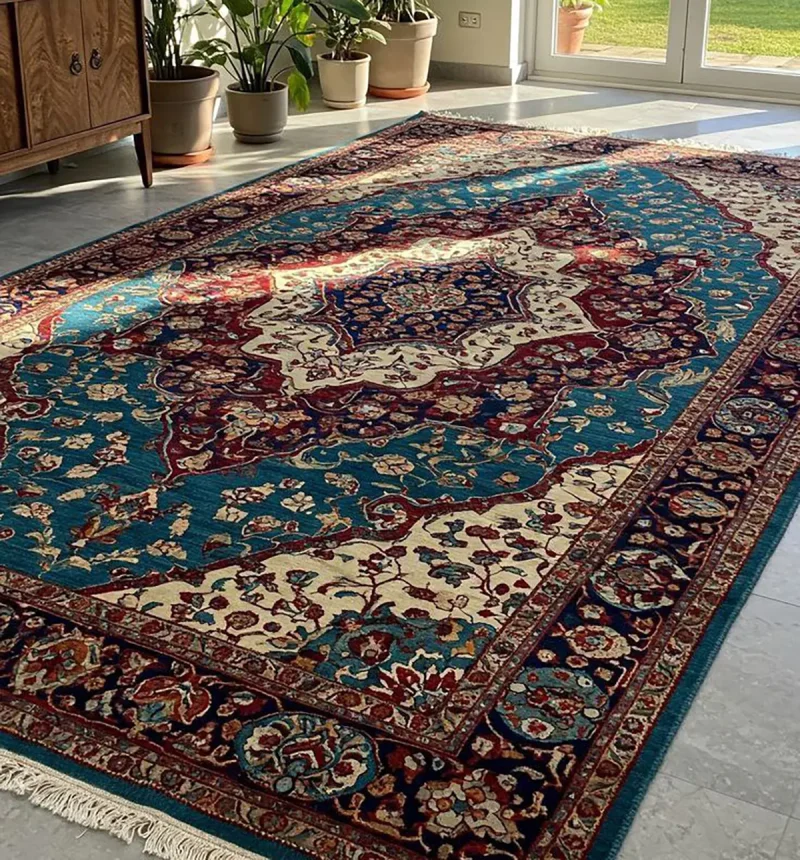Persian Rugs: The Timeless Art of Iranian Carpets
Introduction
Persian rugs, also known as Iranian carpets, are among the most admired and valuable handmade textiles in the world. For centuries, they have symbolized luxury, artistry, and cultural heritage. Whether displayed in museums, homes, or offices, Persian rugs continue to attract attention for their intricate designs, vibrant colors, and exceptional quality.
A Rich History of Persian Rugs
The history of Persian carpet weaving dates back over 2,500 years. Originating in ancient Persia (modern-day Iran), these rugs were initially created for practical use: to provide warmth and comfort in homes and tents. Over time, rug weaving became an art form, supported by Persian kings and dynasties such as the Safavid Empire, which transformed the craft into a global symbol of Persian culture.
Today, Persian rugs are not just floor coverings but masterpieces of fine art, representing Iran’s cultural identity.
Unique Features of Persian Carpets
1. Hand-Knotted Technique
Unlike machine-made rugs, Persian carpets are hand-knotted, sometimes containing millions of knots per square meter. This ensures durability and uniqueness—no two rugs are ever identical.
2. Natural Materials
Traditional Persian rugs are made of natural materials such as wool, silk, and cotton. Wool provides strength, silk adds luxury and shine, and cotton is used for a stable foundation.
3. Traditional Patterns and Designs
The beauty of Iranian carpets lies in their symbolic motifs. Some popular designs include:
-
Medallion designs – featuring a central floral or geometric motif.
-
Garden patterns – representing paradise with flowers, water channels, and trees.
-
Herati motifs – repeating diamond and floral elements.
4. Natural Dyes
Persian weavers use plant-based and mineral dyes, resulting in deep, long-lasting colors like indigo blue, madder red, and pomegranate yellow.
Famous Persian Rug Regions
Iran is home to many weaving centers, each producing carpets with unique characteristics:
-
Tabriz Rugs – Known for detailed patterns and fine craftsmanship.
-
Isfahan Rugs – Famous for elegant floral motifs and silk highlights.
-
Kashan Rugs – Rich red and blue tones with central medallion designs.
-
Qom Rugs – Luxurious silk rugs with high knot density.
-
Kerman Rugs – Recognized for their soft wool and pastel colors.
Why Invest in a Persian Rug?
-
Durability – Hand-knotted Persian rugs last for generations.
-
Cultural Value – Each rug tells a story of Persian heritage.
-
Art and Luxury – Owning a Persian carpet is like owning a piece of fine art.
-
Increasing Value – High-quality rugs often appreciate in value over time, making them a wise investment.
 How to Care for a Persian Rug
How to Care for a Persian Rug
To preserve its beauty:
-
Vacuum gently and regularly.
-
Avoid direct sunlight to prevent fading.
-
Rotate the rug every few months for even wear.
-
Use professional cleaning services when needed.
Conclusion
Persian rugs are more than just floor coverings; they are treasures of art, culture, and tradition. Whether you are a collector, a homeowner, or simply an admirer of fine craftsmanship, an Iranian carpet adds timeless beauty and elegance to any space.
If you are looking to buy authentic Persian rugs, make sure to choose trusted sellers who specialize in hand-knotted carpets. A genuine Persian rug is not only a stunning piece of décor but also a valuable investment for generations to come.




Leave a Reply